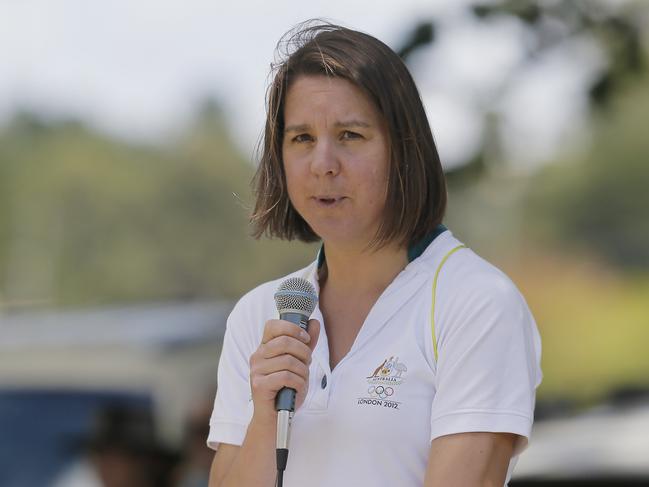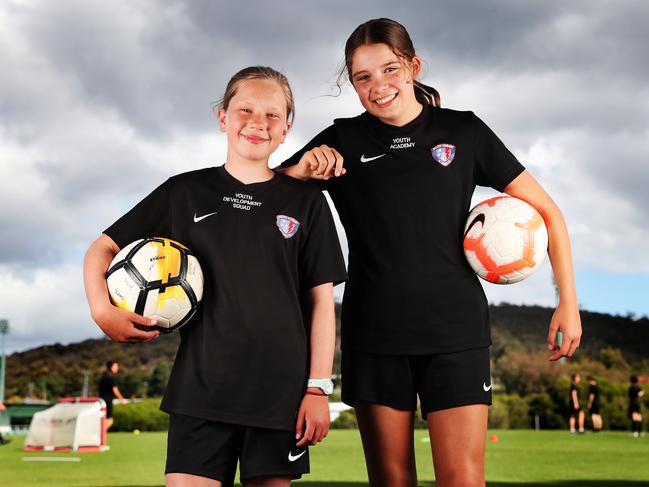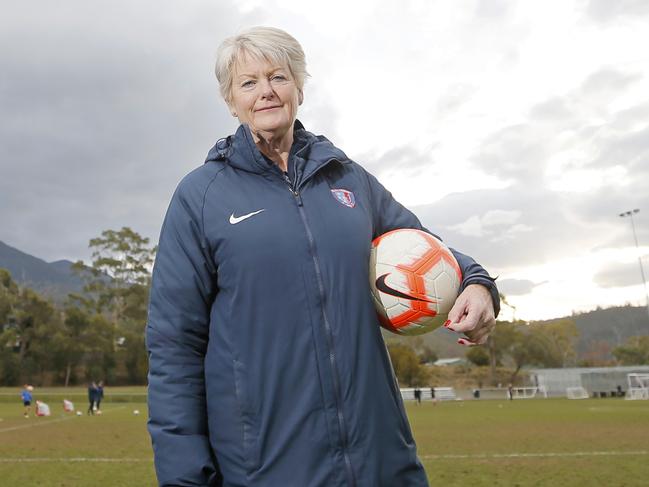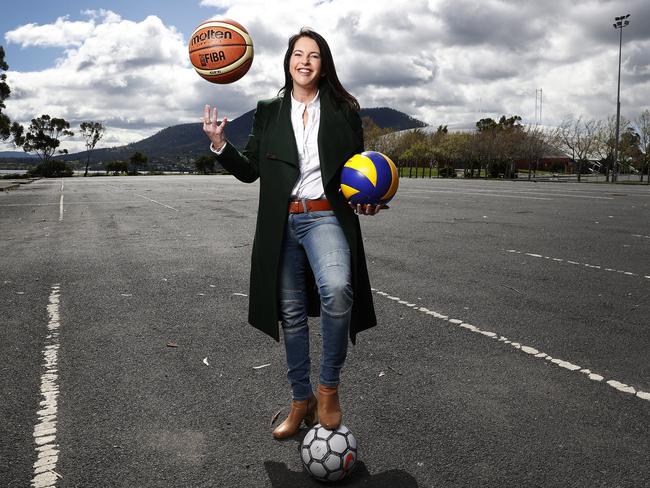State’s sportswomen set sights on kicking goals in bigger leagues
As Tasmania prepares for the rebirth of a men’s state side in the NBL, questions are being asked about what is being done to improve national representation for the state’s female athletes.
Local sport
Don't miss out on the headlines from Local sport. Followed categories will be added to My News.
- Tigers take bite out of AFL Tasmania as women’s side falls over
- Future in grave doubt for Tasmania’s top women’s footy competition
THERE are growing calls to rebuild female sport at the grassroots level in Tasmania to propel growth for women in sport on the national stage.
As Tasmania prepares for the rebirth of a men’s state side in the National Basketball League, questions are being asked about what is being done to get higher representation for the state’s female athletes.
The state opposition believes the government lacks a strategy to grow sporting outcomes for women.
But the government says millions of dollars have been invested to level the playing field.

Womensport and Recreation Tasmania chair and former Olympic Games rower Dana Faletic said the state’s female sporting codes needed a revamp at the grassroots, before bigger strides could be made.
“We need to fix the leagues within the state in the first place to be able to give girls and women the same opportunities as men,” she said.
“That will then ensure we retain girls in sport throughout their teenage years. That way you’ve created a pool and you can argue the case to have a women’s team in the big leagues.”
Ms Faletic said more female sporting infrastructure improvements were needed including female-only change rooms.
She said greater media coverage and stories championing female sporting successes would also be a key driver in advancing women’s sporting outcomes.

South Hobart Soccer Club president Victoria Morton said growth of female participation in local leagues was not being met by adequate supporting infrastructure.
“The aspirations of female footballers are not matching up with facilities,” she said.
“As far as that goes, we’re back in the post-war era.
“We need to be able to give girls pathways into those leagues and, certainly, girls in Tasmania should have the same pathways as everyone in the world.”
Ms Morton linked the club’s increase in female players and women in leadership positions with a decline in club volunteers.
She said gone are the days where women want to be “in the canteen making hamburgers”.
“From my perspective, it’s becoming more difficult to find volunteers because the women are rightfully and pleasingly now playing at the club or they’re becoming coaches, managers and the like,” she said.
“A social shift has happened where in many cases men once expected women to wash and help out around the club, but we don’t want to do that anymore.
“It’s become very difficult to run a club and we’re having to reassess where we sit, because we’re a small business now.”

Sport Minister Jane Howlett said the state government was developing a Tasmanian Women in Sport Strategy, which would focus on key areas to increase women’s participation in sport, sport governance and leadership, coaching and officiating, facilities and environments.
“This strategy will build on initiatives already underway like Levelling and Improving the Playing Field, and gender equity on state sporting organisation boards.”
The recently announced $10 million Improving the Playing Field grants program aims to improve facilities to maintain and build participation rates across all sporting codes.
Labor said the government should do more to get Tasmanian sporting women represented at the national level.
“The Liberal government has talked a lot about getting Tasmanian representation in national sporting competitions but there has been very little focus on female participation,” Labor sports spokesman David O’Byrne said.
“There needs to be a proper strategy, backed by investment, to ensure Tasmanian women have the opportunity to play at the highest level of sport in this country.”

Ms Howlett said Tasmania had the highest percentage of female players of any Australian state at 26 per cent, and said bringing the FIFA Women’s World Cup here in 2023 would be a major step towards the government’s target of 50 per cent female football participation.
ARTAS joins indoor sport team
ANNIE McCANN
PLANS to develop Glenorchy’s indoor multi-sport facility are one step closer to fruition.
ARTAS Architects will design the $20m centre with the help of a new state government tender.
The architect firm is known for integrated design of different specialisms with 30 years experience and offices across Hobart, Launceston and Devonport. ARTAS will partner with internationally awarded sport facility architects Populous, from interstate, to deliver the project.
Sport and Recreation Minister Jane Howlett said the modern sporting facilities – which include multi-use courts and community activity rooms for futsal, netball, volleyball, gymnastics and basketball – would increase participation in sport and promote health and wellbeing.
“ARTAS has a comprehensive and diverse portfolio with a proven track record of delivering projects on time,” Ms Howlett said.
The indoor multi-sport facility project team will meet with sports and community groups from next week to collaborate on the facility’s design.
The facility will complement the adjacent Derwent Entertainment Centre redevelopment, with the project team also working with the DEC upgrade planners during the design phase.
Construction for the facility will start in November and is expected to be completed in late 2022.


